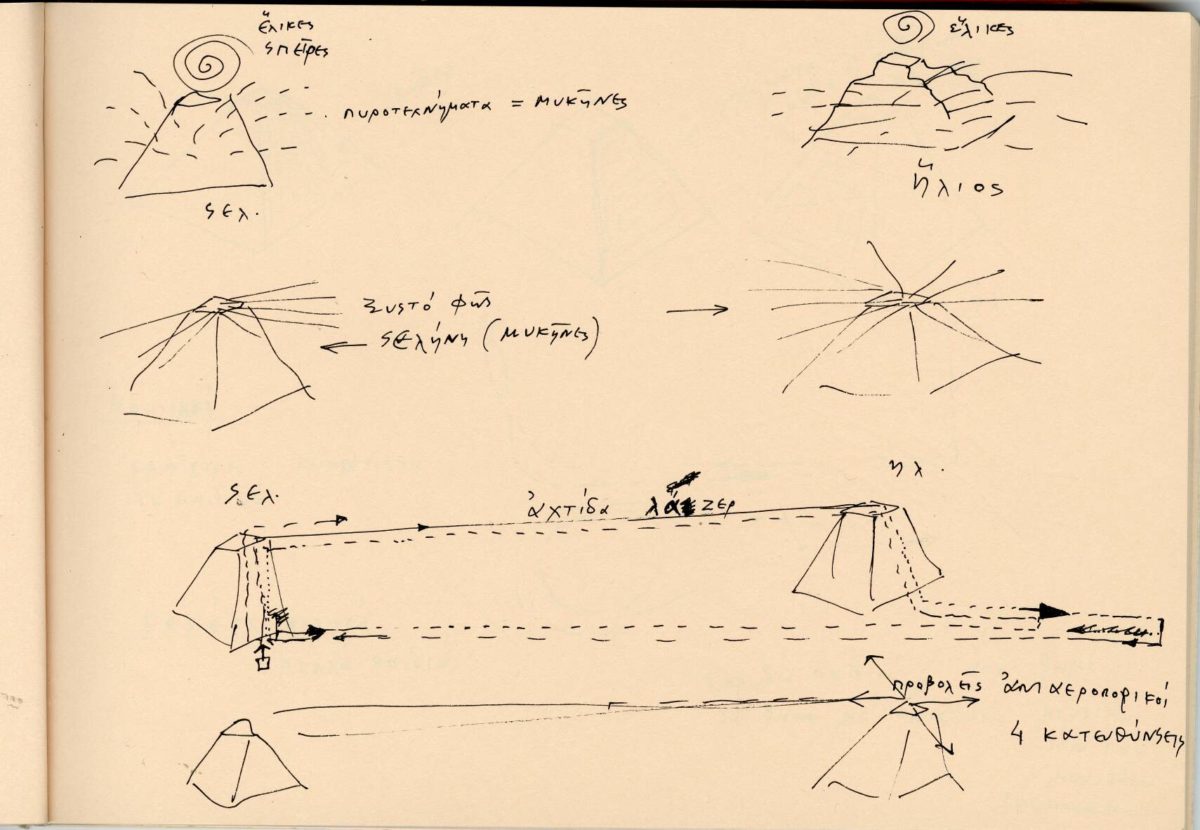Xenakis has always been fascinated by pre-Hispanic culture, such as the Incas and Aztecs. The opportunity to work on a project in Latin America arose during his conference at the National University of Mexico in 1978. Listening to the music of the last two Polytopes (Mycènes Alpha and La Légende d’Eer) that Xenakis played during the conference, Julio Estrada suggested him to create a new Polytope, dedicated to these vanished civilizations. Xenakis visited different archaeological sites and chooses the pyramids of Teotihuacan as the place that will host his show. His idea is to occupy the pyramids with thousands of children, who will wear bright colors (reminiscent of the ancient Toltec tradition of using them during the great religious festivals) and will form abstract patterns in time through their movements. As in his previous Polytopes, anti-aircraft projectors will draw lines of light on the sky. The music that will resonate on the site contains Persephassa and spatialized excerpts from the electroacoustic pieces. Children will use whistles and drums during their parade on the Chaussée des Morts (the main avenue of the site). The project is finally abandoned in 1981, for lack of means.
Categories
Polytope of Mexico

